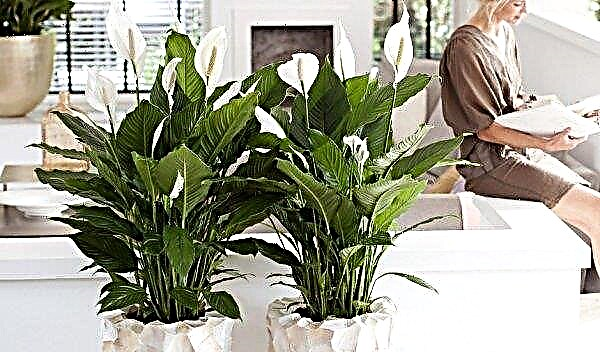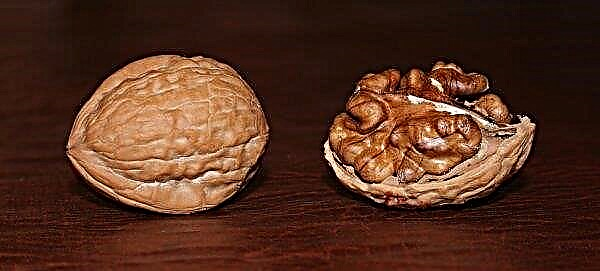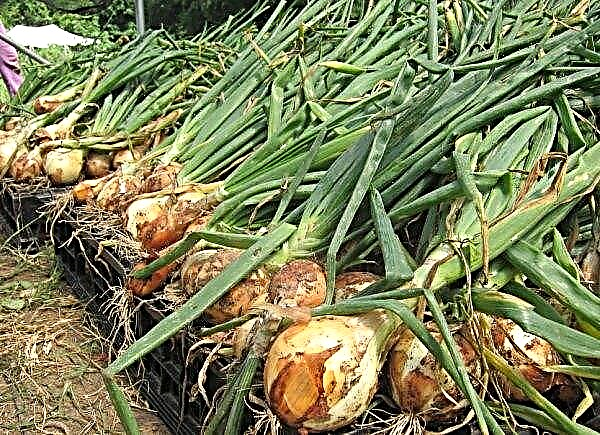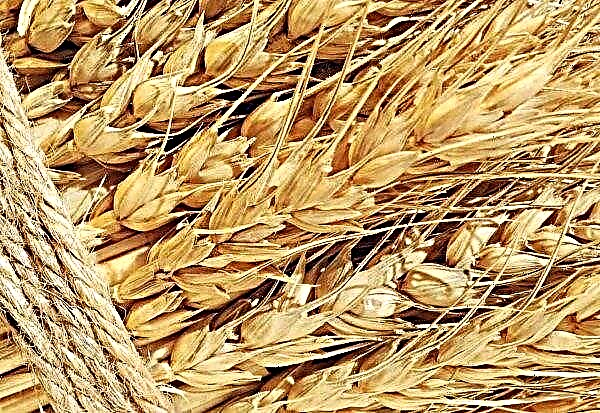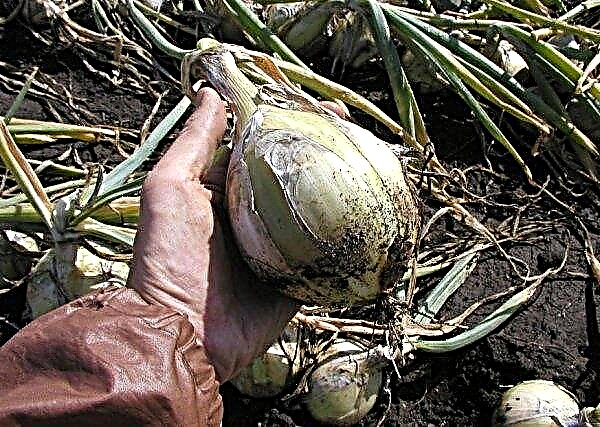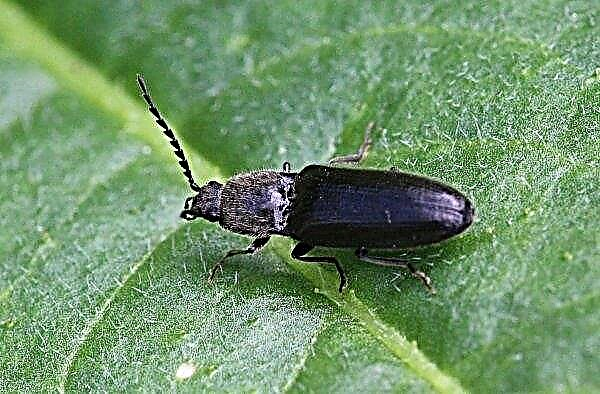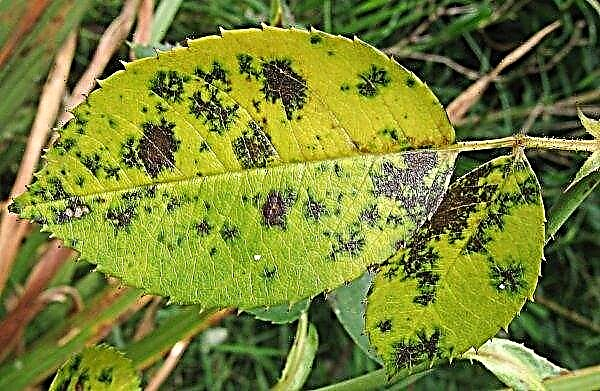From evergreen conifers, you can create a beautiful hedge that will remain decorative in the winter. To do this, you can choose the western thuja Smaragd. This plant perfectly tolerates the climate of the middle strip.
Benefits of thuja Smaragd for hedges
Fencing from evergreen conifers aesthetically pleasing at any time of the year. For this reason, conifers are often planted along paths or fences.
Thuja cultivars Smaragd is often used in the design of hedges for the following reasons:
- This tree grows slowly and gives a small increase - no more than 20 cm per year, so it does not need frequent haircuts. Pruning is rare, only 1 time per year, if not less.
- The height of this plant crop is not more than 4–5 m, and 2 m wide. When planting a hedge, it reaches only 1.5 m.
- Even in the cold season it has a juicy emerald green color.
- In care, this kind is not demanding. It is quite frost-resistant and tolerates slight shading, grows on almost any soil.
- The lifespan of these trees is more than a hundred years.
- When planting in a certain order, due to the dense structure of the crown, it forms a good and reliable hedge. By cutting it, you can give it different curly shapes. Mostly sheared in the form of a cone.
- Thuja needles secrete phytoncides that are useful for the human body, which cleanse the air well.

Thuja of this variety does not tolerate snow drifts. They can lead to the death of these evergreen trees. Varieties of thuja Smaragd are perfect for planting along paths in the park or alleys. Although they also look good in single compositions, they are suitable for growing in containers.
Did you know?The name of the thuja comes from the Greek language, where it means "incense" or "sacrifice." When burning aromatic rocks of this plant, a pleasant smell spreads, which found its application during sacrifices in ancient times.
Selection of seedlings
Saplings of this plant culture can be purchased in pots or other containers with nutrient soil. They are recommended to be purchased in specialized nurseries or from trusted sellers.
When buying them, experts recommend taking into account the following points:
- needles should have a bright emerald color;
- inspect plants for signs of disease or insect activity;
- the root system must be well developed;
- too old a tree will take root for a long time and it will be necessary to take care of it more carefully the first two years.

Soil preparation
Seedlings should be planted in late spring or early summer. A copy planted in the fall may not take root due to frost. Thuja Smaragd prefers nutritious, well-drained soil with a neutral reaction. As drainage, gravel or brick chips can be used. The drainage layer at the bottom of the pit must be about 20–25 cm. For planting, a nutritious soil mixture should be prepared. To do this, mix turf, soil, peat and sand. You can add compost or humus.
Disembarkation Rules
The chosen place for the thuja should be moderately lit by the sun and protected from gusts of wind. Penumbra is perfect. In this case, you need to know that this culture will acidify the soil. Therefore, fruit trees should be no closer than 6 m from the planting. It is better to plant other conifers or flowers and shrubs with a root root system in the neighborhood, since the roots of the thuja itself are located close to the surface.
Important!Under the hot sun in an open area, the thuja begins to dry out and undergo sunburn, and with strong shading it has an underdeveloped crown.
When landing, you must adhere to the following sequence:
- Outline landing sites. Between the seedlings for the arrangement of hedges, you need to leave a distance of 0.5-0.8 m.
- First, dig holes up to 1 m deep and wide. In principle, they are customized to the parameters of the root system of seedlings. At the bottom, pour a little prepared soil mixture and add mineral fertilizers. In the presence of dense clay soil, a thick layer of drainage should be made at the bottom, and more sand and organic matter should be added to the soil mixture.
- Then pour water into the pit.
- The seedling method of transshipment (with a lump of earth) put in a hole.
- Fill the tree with nutritious soil so that the root neck is located at ground level. The soil can be mulched.

At first, it is advisable to close the young landing of the thuja from the scorching sun with a special covering material of white color.
Further care
Thuja Smaragd is an unpretentious and fairly hardy culture. In order for the thuja fence to please with its bright greenery and beautiful shape, it is necessary to organize proper care for it. This is especially true for newly planted young plants. If pests (aphids, false shields) are detected, “Karbofos” should be used, and for fungal diseases, “Fundazol” should be used.
Did you know?From the needles of thuja and cones make the essential oil used in perfumery and medicine. It can be used externally for the treatment of warts and papillomas, or in aromatic lamps for bronchitis.
Watering and fertilizer
The first 4 weeks after planting, the seedlings are abundantly moistened every two days, so that they are better taken. This thuja variety needs moisture. Therefore, in the future, watering should be carried out at least 2 times a month. When heat is established, moisten every week.
Thuja loves the sprinkling process, so it is advisable to water it with a hose with a divider. During such watering, the aroma of needles is enhanced. It is worth noting that excessive watering can cause the process of rotting the root system. It is advisable to mulch the area around the trunk. As a mulch, humus, peat or compost will work well.
In the fall, abundant watering should be done to increase the winter hardiness of the thuja. After watering, it will not be amiss to carry out the removal of weed grass and loosen the soil around the area to improve the flow of moisture and oxygen to the roots of the tree.Important!The roots of these evergreen trees are located quite close to the ground level, so the soil should be loosened carefully and shallowly.
To make trees happy with their fluffy needles, it is necessary to fertilize 2-3 times a year:
- in April and May, nitrogen and phosphorus fertilizers are applied;
- in August, fertilizing with potassium is used.

For coniferous producers produce ready-made complex fertilizers for the season "Spring-Summer" and "Autumn". In the spring - summer period, organic food - compost and humus is suitable as a top dressing.
Pruning
For this hedge, it is necessary to carry out sanitary pruning - to remove dried, diseased areas of the disease. The grown specimens are cut 2 times per season - at the end of spring and summer, but you can limit yourself to one haircut per year. Before the onset of cold weather, sanitary pruning is done with the removal of broken and shrunken branches. Thuja Smaragd has a great haircut. Its crown is normalized mainly in the form of a cone. One third of the shoot must be cut with a sharp and disinfected secateurs.

Shelter for the winter
Thuja Smaragd tolerates winter well, but young plants should be protected from frost in the first years. The soil under the trees should be mulched with a thick layer, using peat, needles or fallen foliage for this. Before this, sanitary pruning and fertilizing with fertilizers should be carried out.
To do this, it is better to take professional fertilizers for conifers for the fall. They will be dominated by potassium and phosphorus. Some fertilize evergreen crops with coffee brewed asleep, slightly mixing it with the topsoil. If strong winds occur in the thuja growing place, then protection in the form of shields covering the plants is necessary.Important!In early spring, you should take care of covering the needles from the bright rays of the sun. The root system in this period has not yet woken up near the tree, and solar activity can lead to burns.

The same situation can happen in winter on a sunny day, when the rays are reflected from the snow. To prevent this from happening, young plants are tied with light covering material, which allows air to pass through, with burlap or using shading shields. In adult plants, the top is covered. In areas with snowy winters, thujas connect branches together for the winter so that they do not break under the weight of snow.
Did you know?Thuja has healing effects. A decoction of its needles and bark is used as a diaphoretic, diuretic and laxative, as well as for colds and rheumatism.
Comparison with Brabant
Thuya Smaragd has a competitor, which is also taken for growing hedges. This is the Brabant variety. Although he also belongs to the Western Thujas, he has his own characteristics.
| Grade name | Emerald | Brabant |
| Height | In the hedge - up to 1.5 m, in a single landing - up to 4 m. | In the hedge - up to 4 m, in a single landing - up to 20 m. |
| Diameter | Up to 2 m | Up to 1.5-2 m |
| Root system | Fissured surface | Fissured surface |
| Crown | Pronounced cone, the tops do not close | Conical |
| Leaf color | Bright green | Green |
| Winter hardiness | Good, but for the winter, young plants must be covered. the plant must be protected in winter and spring from sunlight. | Good, but the first 2-3 years after planting, the plants are sheltered from the cold and sunburn. |
| Rates of growth | Slow, 10–20 cm / year | Fast, 25–35 cm / year. For 10 years, the cultivated hedge reaches four meters in height. |
| Life span | More than 100 years | More than 100 years |
So if you need to grow a fence that resembles a southern landscape, then you should choose the thuy Smaragd. Those gardeners who want to get a high dense fence from conifers should plant Brabant. From this variety, when trimming the top, you can grow a solid wall.

Thuja Smaragd has an excellent decorative look and it will make a beautiful hedge with conical tops. This plant should be chosen by fans of the southern landscapes. It is unpretentious and has a good winter, then young plantings will need to be protected before the onset of cold weather.



